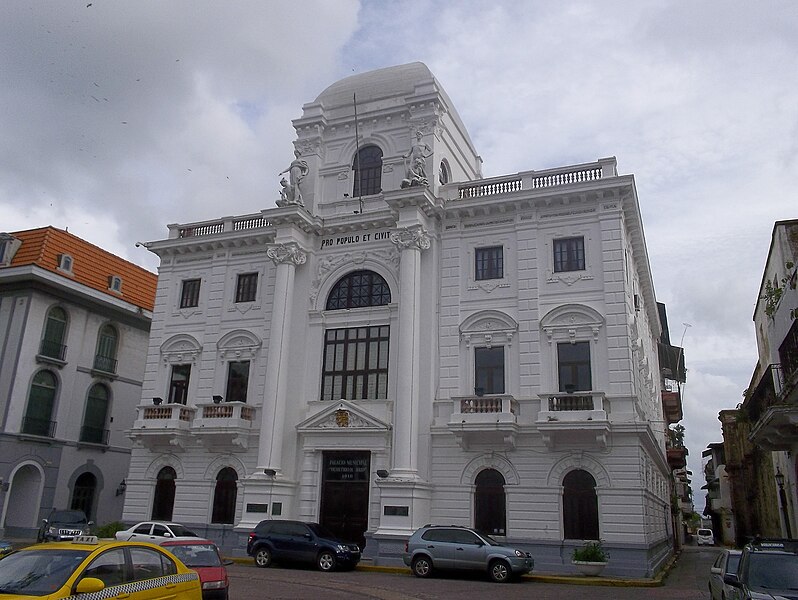Lugares de interés (POIs) del Mapa
2: Casco Viejo
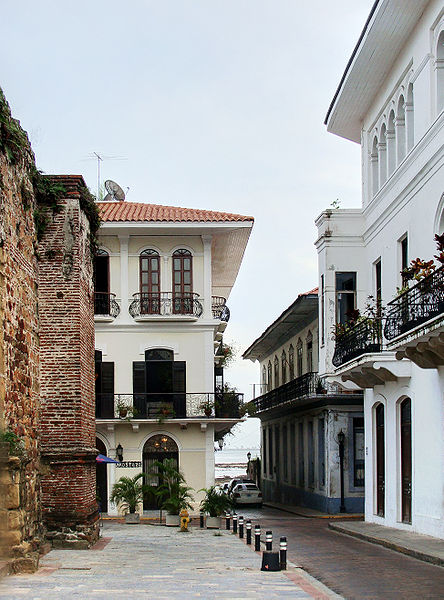
Photo By Melpanama (Own work) [Public domain], via Wikimedia Commons
Casco Viejo (Spanish for Old Quarter), also known as Casco Antiguo or San Felipe, is the historic district of Panama City. Completed and settled in 1673, it was built following the near-total destruction of the original Panamá city, Panamá Viejo in 1671, when the latter was attacked by pirates. It was designated a World Heritage Site in 1997.
Panama city was founded on August 15 of 1519 and it lasted one hundred and fifty-two years. On January 1671, the Governor Juan Perez de Guzman had it set on fire, before the attack and looting by the pirate Henry Morgan. In 1672, Antonio Fernández de Córdoba initiated the construction of a new city, which was then founded on January 21, 1673. This city was built on a peninsula completely isolated by the sea and a defensive system of walls. Today this place preserves the first institutions and buildings of the modern city of Panama. It is known as Casco Viejo (Spanish for Old Town).
Más sobre Casco Viejo
3: Panama Canal
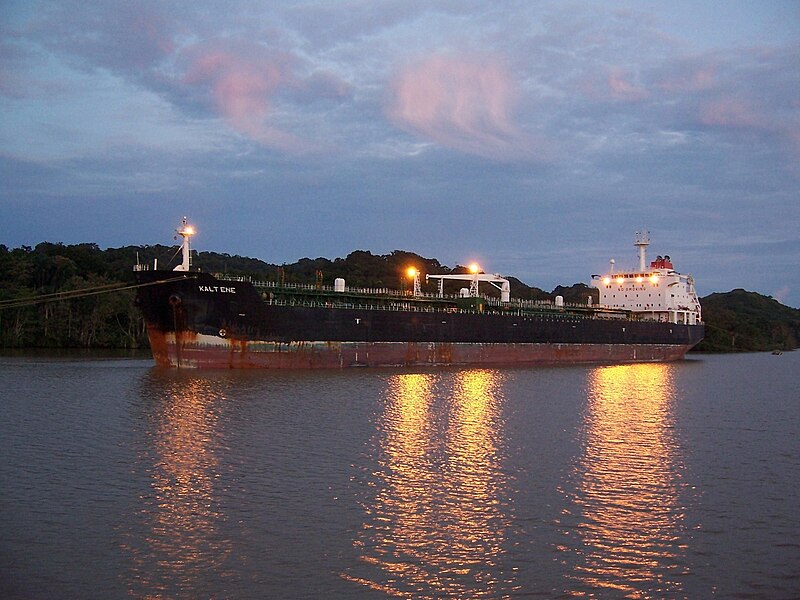
Photo By Nat Edwards [Public domain], via Wikimedia Commons
The Panama Canal (Spanish: Canal de Panamá) is a 77.1-kilometre (48 mi) ship canal in Panama that connects the Atlantic Ocean (via the Caribbean Sea) to the Pacific Ocean. The canal cuts across the Isthmus of Panama and is a key conduit for international maritime trade. There are locks at each end to lift ships up to Gatun Lake, 26 metres (85 ft) above sea level. Gatun Lake was created to reduce the amount of work required for the canal. The current locks are 33.5 metres (110 ft) wide. A third, wider lane of locks is currently under construction and is due to open in 2015.
France began work on the canal in 1881, but had to stop because of engineering problems and high mortality due to disease. The United States (US) later took over the project and took a decade to complete the canal in 1914, enabling ships to avoid the lengthy, hazardous Cape Horn route around the southernmost tip of South America (via the Drake Passage) or to navigate the Strait of Magellan. One of the largest and most difficult engineering projects ever undertaken, the Panama Canal shortcut made it possible for ships to travel between the Atlantic and Pacific Oceans in half the time previously required. The shorter, faster, safer route to the US West Coast and to nations in and along the Pacific Ocean allowed those places to become more integrated with the world economy.
Más sobre Panama Canal
4: Mi Pueblito

Photo by Dozenist [CC-BY-SA-3.0], via Wikimedia Commons
Occupying several acres in Panama City, Mi Pueblito is a must-see demonstration of Indian culture and of black culture in the 1950s.
The name means My Tiny Village, and the site contains several replica houses. Those that might have been occupied by black Panamanians are furnished as they would have been in the 1950s. The native Indian thatched homes in their jungle-like setting in Mi Pueblito display nothing in the way of furniture, other than a few clay pots.
Raised well above ground level for protection, they are entered by means of a removable notched log placed at an angle from ground to floor.
The floor itself is made from thin planks that give when stepped on. It is difficult to do this silently. All members of the family slept on the floor.One of the thatched structures has two floors, the upper level being for storage of musical instruments out of reach of children.
A large thatched meeting hall is in use today in Mi Pueblito. It and its contents are built without nails or modern tools. Benches are hewn from large trees using nothing more than sharp stones. The result is quite remarkable.
(www.yourpanama.com)
Más sobre Mi Pueblito
5: Panama Canal Museum
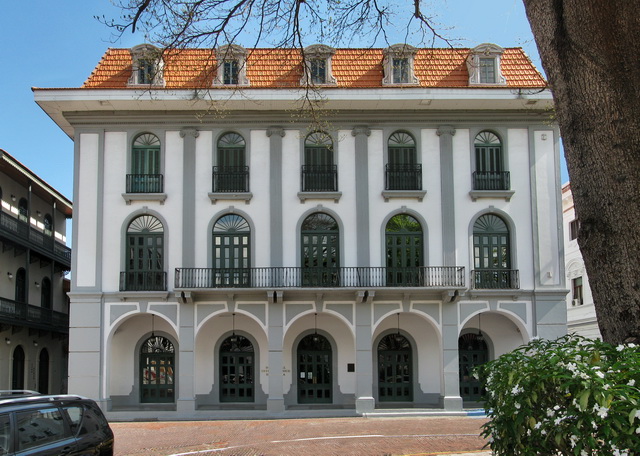
Photo By Editorpana (Own work) [GFDL or CC-BY-3.0], via Wikimedia Commons
The Panama Canal Museum (Spanish: Museo del Canal Interoceánico de Panamá) is a non-profit and public museum located in Panama City. Established in 1997, the museum is devoted to the history of the construction of the Panama Canal in its various stages, including the first French construction attempt, the later construction by the United States, and the eventual transfer to Panamanian control. The current building dates from 1874 and served originally as the headquarter of both the French and U.S. companies engaged in the construction of the canal.
Más sobre Panama Canal Museum
6: Ancon Hill Lookout Point

Photo By Kiam-shim (Own work) [CC-BY-SA-3.0 or GFDL], via Wikimedia Commons
Ancon Hill is a 654-foot hill that overlooks Panama City, adjacent to the township of Ancón. It was under US jurisdiction as part of the Panama Canal Zone for much of the 20th century and therefore was never developed::text like most of the surrounding urbanized parts of the city. As a result, it became a kind of an "island" of jungle in an urban area, where wildlife still survives cut off from other jungle areas. It is not uncommon to see sloths, White-nosed Coati, Nine-banded Armadillos, Geoffroy's Tamarins, or deer on Ancon Hill, which now has protected status. Its name is used as an acronym by a Panamanian environmental group, Asociación Nacional para la Conservación de la Naturaleza (ANCON).
The lower slopes contained residences and Gorgas Hospital. Higher up were the residence of the Governor of the Canal Zone and Quarry Heights, where the United States Southern Command was located. Quarry Heights was named for being adjacent to a large rock quarry on one side of the hill, which left a visible cliff face on one side. The hill contains an abandoned underground bunker once manned by the US Southern Command. At the top are two broadcast towers and a small road that reaches them. One-way vehicular traffic is now allowed during daylight hours. Hikers can use the road to reach the summit, and the hill is a popular jogging and hiking trek. Along the path, all manner of vegetation and birds can be seen, including a large number of orchids (which are protected by CITES).
Más sobre Ancon Hill Lookout Point
7: National Theatre of Panama

Photo By Melpanama (Own work) [GFDL or CC-BY-3.0], via Wikimedia Commons
National Theatre of Panama is located in the old city of Panama. Its construction was ordered by Act 52 of 1904.
The National Theatre is part of a cross-shaped building. The other part is occupied by National Palace. The theater was designed by Italian architect Genaro Ruggieri, with a style of Italian operetta theater, and opened on October 1, 1908.
Más sobre National Theatre of Panama
8: San Jose Church

Photo By N. Nazareth Valdespino O. (Iglesia de San José) [CC-BY-2.0], via Wikimedia Commons
(cascoviejo.com)
Más sobre San Jose Church
9: Plaza de Francia
Photo By Franco4444 (Own work) [CC-BY-SA-3.0], via Wikimedia Commons
Originally the main square of the walled city, Plaza Francia was designed by Leonardo de Villanueva and is dedicated to the French effort to build the Panama Canal and the thousands of people from around the world who died during the process. An obelisk topped with a French coque crowns the monument and a dozen marble plaques provide details of the labor of construction the Canal. Flanking the Plaza are the infamous Las Bóvedas, the French Embassy, the Instituto Nacional de Cultura (National Culture Institute), as well as many contemporary vendors with souvenirs, food and drink.
(cascoviejo.com)
Más sobre Plaza de Francia
10: Catedral de Panamá

Photo By Oray27s (Own work) [CC-BY-SA-3.0], via Wikimedia Commons
The magnificent Catedral de Panamá, one of the largest in Central America, was completed in 1796 and practically abandoned until a major renovation in 2003. Today it stands over Plaza Catedral (Plaza de la Independencia) and is one of the main points of interest in Casco Viejo. The two towers on either side of the main entrance are encrusted with mother of pearl from the Pearl Islands and offer an interesting architectural contrast to the immense stone entrance wall and wooden doors. The interior is vast but modestly adorned apart from the impressive marble alter.
(cascoviejo.com)
Más sobre Catedral de Panamá
11: Iglesia de San Francisco de Asis

Photo By Victor Sánchez Urrutia (Own work) [CC-BY-SA-3.0], via Wikimedia Commons
(cascoviejo.com)
Más sobre Iglesia de San Francisco de Asis
12: Museo de Arte Religioso
Next to the ruins of the Iglesia Santo Domingo and the Flat Arch (Arco Chato) sits the Museum of Colonial Religious Art (Museo de Arte Religioso Colonial), a small museum that displays a collection of colonial-era religious artifacts that includes 16th and 17th-century Spanish works that survived the sacking of Panamá Viejo by pirates. Admission is around $1.00.
(cascoviejo.com)
Más sobre Museo de Arte Religioso
13: Palacio de las Garzas
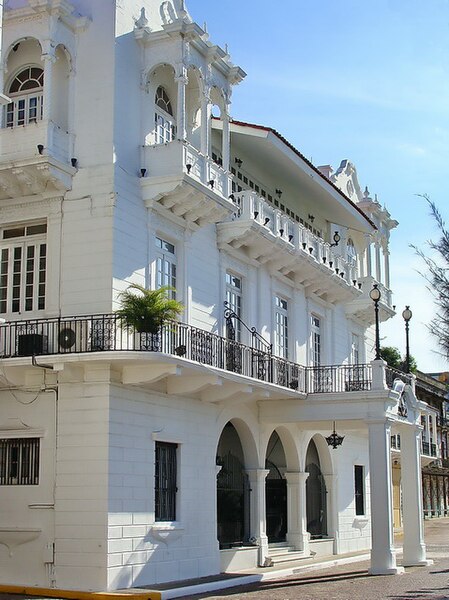
Photo By Melpanama (Own work) [GFDL or CC-BY-3.0], via Wikimedia Commons
The Palacio de las Garzas (Herons' Palace) is the governmental office and residence of the President of Panama. It receives its name because of herons roamming freely in the courtyard. The herons were first brought to the building in 1922 by former president Belisario Porras, at the suggestion of friend and famed Panamanian poet Ricardo Miro.
The building was built in 1673 and has undergone many changes through the years. Initially, it was used as a home for the Spanish governor, as a royal winery, as a warehouse, and as both customs and National Bank's headquarters.
The new presidential house replaced the old customs offices on January 19, 1885. The remodeling works included the addition of a new room for official events in the upper level, along with other rooms to be used by the president and his family members. A Colombian artist, Epifanio Garay, was in charged of painting the portraits of all presidents since 1855.
The current Palacio de las Garzas was officially inaugurated on August 3, 1923. However, it was not until 1938 that it was acquired totally when the National Bank moved to its new headquarters located at Central Avenue. This transaction was in process since 1936 through an exchange with the Panamanian State.
Extensive renovations to the building were done around 1922, under the supervision of architect Leonardo Villanueva-Meyer. Works included the Andalusian courtyard, the addition of a third floor and two towers.
Más sobre Palacio de las Garzas
14: Las Bóvedas
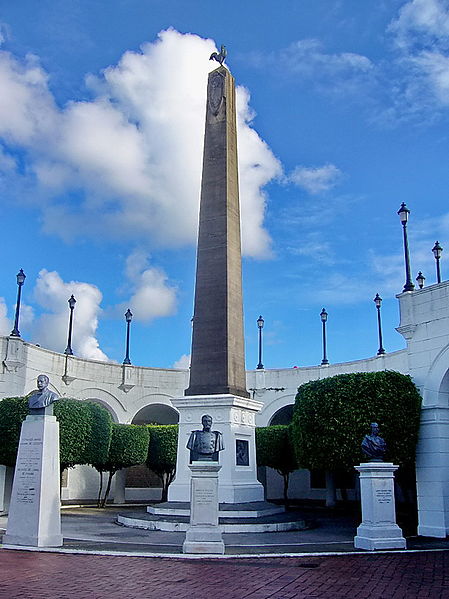
Photo By Lasbovedadpanama.jpg: Desi Burgosderivative work: Editorpana (Lasbovedadpanama.jpg) [Public domain], via Wikimedia Commons
Las Bóvedas, the vaults or dungeons, originally formed part of the fortification wall around Casco Viejo and create a border around Plaza Francia. They were restored in 1983 and are now home to galleries, shops and a beautiful French restaurant with the same name.
(cascoviejo.com)
Más sobre Las Bóvedas
15: Iglesia de Santa Ana

Photo By Kiam-shim (Own work) [CC-BY-SA-3.0 or GFDL], via Wikimedia Commons
Originally this was the parish church for the area outside Panama City's walls. Built with funds donated by the Count of Santa Ana, it was consagrated in 1764. Rubuilt after de 1854 fire, it was completely remodelled in the XX century.
(wikimedia.org)
Más sobre Iglesia de Santa Ana
16: Casa Góngora

Photo By Yari Vallarino (Casa Góngora - 08-050-DCMHN) [CC-BY-2.0], via Wikimedia Commons
Casa Góngora is one of the oldest houses in Panama and the last surviving example in the city of domestic colonial architecture of the 17th century. The house was built around 1760 and named after Paul Góngora Caceres, a prominent merchant. It was restored in 1998-99 and much of the original woodworking (doors, balconies, armor) was kept intact. Casa Góngora is now property of the Municipality of Panama and hosts regular exhibitions of Panamanian artists' work.
(cascoviejo.com)
Más sobre Casa Góngora
17: Iglesia de La Merced

Photo By Editorpana (Own work) [CC-BY-SA-3.0 or GFDL], via Wikimedia Commons
The construction of Iglesia de la Merced dates back 1680 and the beautiful baroque facade was brought over stone by stone from Panamá Vieja, the original city center founded by the Spaniards. It is best viewed and photographed in the late afternoon when the sun sparkles of the white bell towers and tiny chapels.
(cascoviejo.com)
Más sobre Iglesia de La Merced
18: Old City Hall
Photo By Marrovi (Own work) [CC-BY-SA-3.0], via Wikimedia Commons
Originally built in 1910, the building has since been converted to house the History Museum.
Located on the second floor of the Municipal Palace building, the Museum of History presents documents, artifacts, paintings, sculptures and pieces from throughout Panama's history. You are certain to leave with a better understanding of Panama and it's history.
(cascoviejo.com)
Más sobre Old City Hall
19: Plaza Bolivar
Photo By Daniestrada01 (Own work) [CC-BY-SA-3.0], via Wikimedia Commons
Plaza Bolívar is a small plaza surrounded by 19th-century architecture and is one of the most pleasant places in Casco Viejo, day or night. The plaza gets little road traffic and is trimmed with cafes and restaurants outfitted with large shade umbrellas and a casual atmosphere. The focal point of the plaza is a monument to the Venezuelan general Simón Bolívar, the "Liberator of Latin America". The Plaza was originally known as the Plaza de San Francisco but in 1883 the city council devoted the plaza to Bolívar the Liberator, a respected hero throughout Latin America.
(cascoviejo.com)
Más sobre Plaza Bolivar
20: National Institute of Culture

Photo By Victor Sánchez Urrutia (Own work) [CC-BY-SA-3.0], via Wikimedia Commons
The National Institute of Culture (Instituto Nacional de Cultura de Panama - INAC) was formerly the Supreme Court building and now houses a small theater (Anita Villalaz Theatre) and events throughout the year::text like theater performances, concerts and conferences. The building is not open to the public.
Más sobre National Institute of Culture
21: Antiguo Club Union

Photo from cascoviejo.com
Once the playground for Manuel Noriega and the Panamanian elite, this amazing structure fell into disrepair in recent years thanks to neglect and a military invasion. The ruins of the building have been used as the backdrop in films::text like James Bond: Quantum Of Solace and The Tailor of Panama, and most recently became the best spot for rave style outdoor parties. The whole area is now closed off completely to the public as it undergoes renovations.
(cascoviejo.com)
Más sobre Antiguo Club Union
22: Plaza de La Independencia
Photo By Osopolar (Own work) [CC-BY-SA-3.0 or GFDL], via Wikimedia Commons
Plaza Independencia, also known as Plaza Mayor and Plaza Catedral, is the main square in Casco Viejo. The country's independence from both Spain and Colombia were celebrated here and busts of Panama's founding fathers are scattered around the plaza. There is a large gazebo in the center that occasionally holds musicians playing on the square and the plaza is surrounded by historic buildings such as the main cathedral, Palacio Municipal, the Canal Museum, and the once illustrious and now contested, under construction Hotel Central. Plaza Catedral is shaded by large Tabebuia trees, ablaze with pink blossoms during Panama’s summer dry months and the plaza plays hosts to a monthly flea market and food fair.
(cascoviejo.com)
Más sobre Plaza de La Independencia
23: Galería Juan Manuel Cedeno

Photo from cascoviejo.com
Juan Manuel Cedeño is one of the most famous Panamanian artists, along with Guillermo Trujillo and Alfredo Sinclair. He is most famous for his drawings and sketches - clean, precise, subtle and moving. This small gallery space, located on Plaza Francia, is run by the National Institute of Culture (INAC) and houses a collection of Panamanian and Latin American artists.
(cascoviejo.com)
Más sobre Galería Juan Manuel Cedeno
24: Emerald Museum

Photo from cascoviejo.com
The History Emerald Museum is a project developed by the Diaz Alfaro Bros, owners of the company Joyeria Caribe, this museum is an honor to the contribution made by the ancient cultures such as goldsmith techniques, highlighting the heritage values of the myths and legends about emeralds and gold.
Presents an important collection of beryls, and also shows the magical world of the Colombian Emerald mines and priceless items because of their technique and symbolism.
(jcemeralds.com)
Más sobre Emerald Museum
25: Iglesia de la Compania de Jesus
Photo By Mirna Chen (Own work) [CC-BY-SA-3.0], via Wikimedia Commons
The Iglesia de la Compania de Jesús and surrounding buildings were constructed around 1741 to accommodate a school and were later turned into a university. The church was destroyed by a fire in 1781 and further damaged by an earthquake in 1882. It is currently undergoing reconstruction.
(cascoviejo.com)
Más sobre Iglesia de la Compania de Jesus
26: Esteban Huertas Promenade
Photo By Daniestrada01 (Own work) [CC-BY-SA-3.0], via Wikimedia Commons
Somewhat reminiscent of the Malecon in Havana, Cuba, walking along this promenade is the best way to end your afternoon in Casco Viejo. It's full of tourists, vendors and young couples taking in the ocean breezes and the top to bottom view of the Panama City bay, including the ships lining up to enter the Panama Canal. The Paseo Esteban Huertas begins on one side of the former Union Club and ends at Plaza de Francia.
(cascoviejo.com)
Más sobre Esteban Huertas Promenade
27: Iglesia Santo Domingo

Photo By Melpanama (Own work) [GFDL or CC-BY-3.0], via Wikimedia Commons
Originally constructed in the 17th century, the church and convent of Santo Domingo were never rebuilt after a fire that destroyed them in 1756. The only thing that did survive – for centuries – was the Flat Arch (Arco Chato) sitting at the entrance. The Arch stood as a testament to the fact that Panama was spared from major seismic activity and contributed to the case to build a major canal in the area. It eventually collapsed on a Friday night in November 2003 – from age and neglect. Currently, the ruins of Santo Domingo are undergoing restoration and will eventually provide a space for cultural and artistic presentations similar to the space in Panama Viejo ruins.
(cascoviejo.com)
Más sobre Iglesia Santo Domingo
28: Plaza Herrera
Photo By Daniestrada01 (Own work) [CC-BY-SA-3.0], via Wikimedia Commons
Plaza Herra sits on the edge of the more gentrified area of Casco Viejo and its clear it has seen more illustrious times. The surrounding buildings, many large residences originally, have beautiful facades but stand in disrepair apart from one or two restaurants that change over frequently. At the center of the plaza is a statue of local hero General Tomás Herrera on horseback. Herrera fought in South America's wars for independence from Spain and later led Panama's first attempt to gain independence from Colombia in the mid 1800s. Parts of the original city wall can be found off the west side of the plaza.
(cascoviejo.com)
Más sobre Plaza Herrera
29: La Iglesia San Felipe Neri
Photo By Ayaita (Own work) [CC-BY-SA-3.0], via Wikimedia Commons
San Felipe de Neri was inaugurated in 1688 and is considered one of the oldest churches in the city. It has been home to many things over time, including a school, a seminary and a center for Catholic Cultural Action, as well as most recently, a home for the elderly. Modern restoration began in 1995.
(cascoviejo.com)
Más sobre La Iglesia San Felipe Neri
30: Salon Bolivar
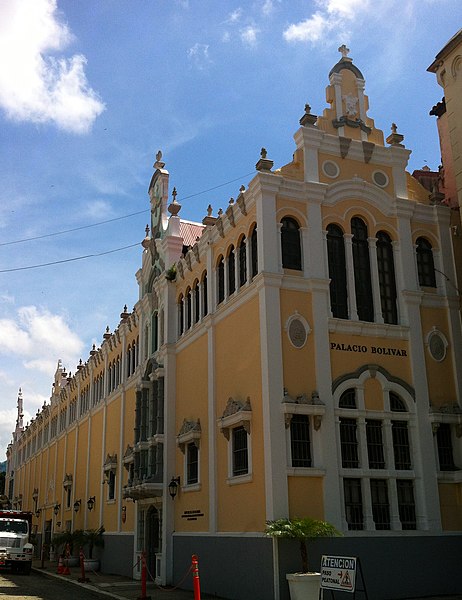
Photo By Marta (Own work) [CC-BY-SA-3.0], via Wikimedia Commons
Salón Bolívar is part of beautifully renovated colonial building Palacio Bolivar on the Plaza. Lucky visitors of the palace that now serves as Panama’s Foreign Ministry offices are afforded a water’s edge view all the way to Panama Viejo. The Salon is now a small museum about Panama’s political history. The documents of the Amphictyonic Congress, organized by Simón Bolívar in 1826 to create a confederation between Columbia, Mexico and Central America and lent by the Brazilian government, are on exhibit here.
(cascoviejo.com)
Más sobre Salon Bolivar

